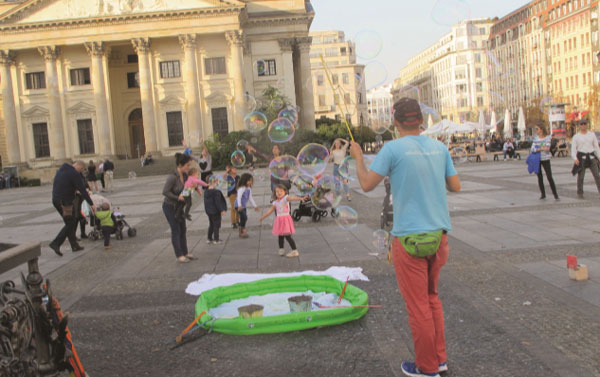
Tickets are also sold for the lone traveller, taking either short or long trips with the “kurzstrecken” ticket which is good for three stops on the U-Bahn or S-Bahn, or six stops on any bus or tram.
Some day passes (Tageskarte) cover two trips in a day and save you money, while others are often valid for unlimited rides on all forms of public transport until 3am the next day.
There is also a seven day pass (Wochenkarte) which is transferable and lets you take along another adult and up to three children aged six to 14 for free after 8pm Monday to Friday and all day on Saturday, Sunday and holidays. Since Berlin is the top urban tourist destination in Germany, public transport offers group day passes (kleingruppen-Tageskarte) valid for up to five people travelling together.
Berlin’s public transport system also caters for the first time visitor, thanks to the Berlin WelcomeCard which tourists can use in Berlin and the nearby city of Potsdam. The WelcomeCard actually comes in handy considering that there is plenty to see in and around the capital city.
According to the website visitberlin.de, the three most important reasons given for a trip to the German capital are sights, the art and culture scene as well as the cityscape and architecture.
From the popular Brandenburg Tor— Germany’s symbol of re-unification—to sections of the Berlin Wall. You could also spend time in Berlin’s numerous museums, shopping centres, open squares and parks.
The Alexanderplatz—the public square which hosted the 1989 protests or the museum at Checkpoint Charlie which is part of the former Berlin Wall are good spots to visit. Checkpoint Charlie, set up by the allied forces is a reminder of the former border crossing, the Cold War and the partition of Berlin and it is one of the sights of Berlin popular with visitors.
The Spy Museum, the Berlin television tower, Europe’s highest building open to the public is also hard to miss. So is the Berlin Cathedral and Charlottenburg Palace, the royal summer residence for Sophie Charlotte, the first Queen consort of Prussia. So is the Zoologischer Garten and Aquarium, the oldest animal sanctuary in Germany.
A report released early this year by the Berlin-Brandenburg Statistics office noted how the number of international visitors to the capital had already exceeded five million— a new high. In 2016, the number of foreign visitors staying overnight in Berlin (14.2 million) increased by 3.9% compared to the previous year while the number of international visitors was about five million or 3.7% more than the previous year.
The same website notes how current studies show a very high level of acceptance for tourism among Berliners. And the Berliners are reaping the dividends of increased travel by international visitors into their city.
Close to 240, 500 Berliners currently work in the tourism industry and the statistics office says gross revenues have risen by €1 billion over the last two years.
“Berlin has become one of the top tourist destinations and is considered a role model around the world,” Ramona Pop, Senator for Economics, Energy and Public Enterprise, said early this year.
“Our success in the tourism industry is thanks to our creativity, welcoming culture and the hard work of the hotels and other partners in the tourism sector,” Pop said, further noting that there are now plans to develop a new approach to tourism in the years ahead.
 The Independent Uganda: You get the Truth we Pay the Price
The Independent Uganda: You get the Truth we Pay the Price



Berliners obey the traffic rules when they are on a bike? I think that is a myth and I was born in that city.
I think nowhere in the world do bikers obey traffic rules.